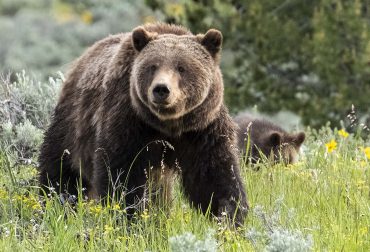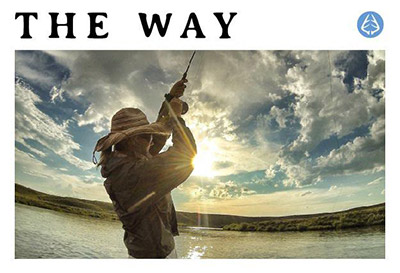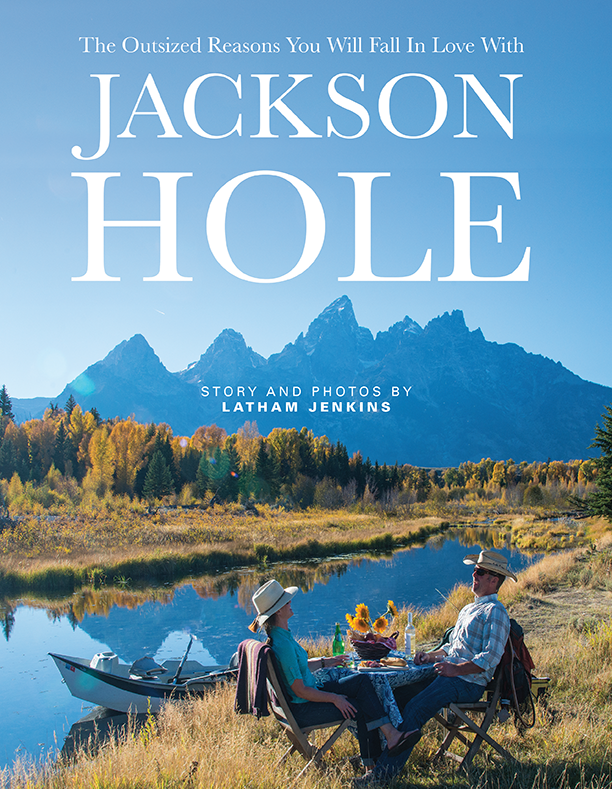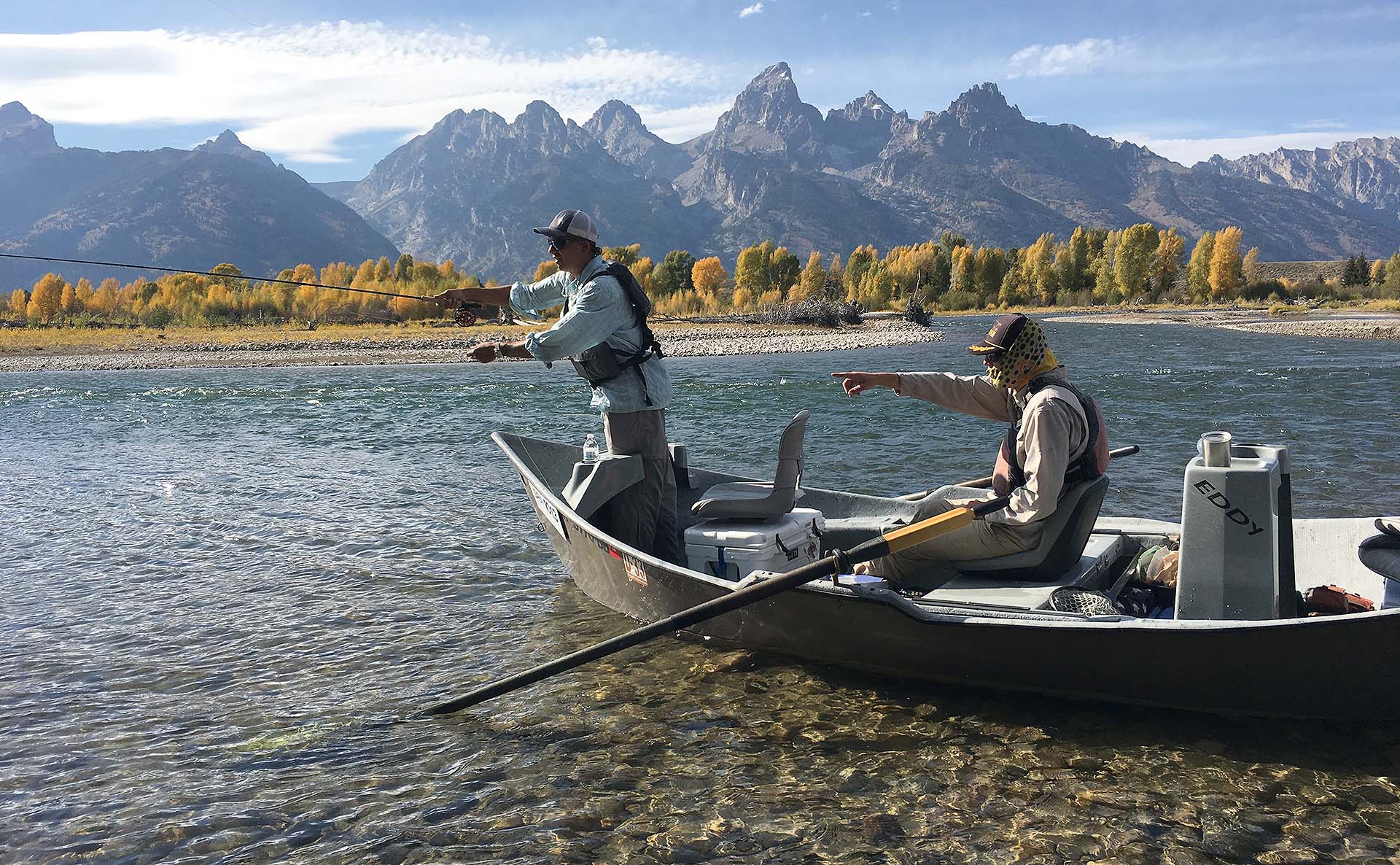
It’s no exaggeration to say that fly fishing in Jackson Hole – wading in the crystal waters of the Snake River, against the backdrop of the rugged Tetons – is like a scene straight from A River Runs Through It. For good reason, both novice and experienced anglers dream of a Grand Teton fly fishing trip. Not only are the surroundings utterly picturesque, but the native trout are spectacularly beautiful and exceptionally fun to catch. It’s absolutely true: fly fishing in Jackson Hole is an angler’s dream.
The Snake River: Jackson Hole’s Wild & Scenic River
While there is certainly no shortage of beautiful, exciting places to fly fish in Jackson Hole, the Snake River is the crown jewel of the valley. Beginning with the confluence of two diminutive streams in the Two Oceans Plateau in Yellowstone National Park, the Snake River flows south into Grand Teton National Park and Jackson Lake. After escaping via the Jackson Lake Dam, the river winds southward through the Jackson Hole valley, and offers miles upon miles of extraordinary fishing.
Though many first-time visitors are a tad troubled by the waterway’s name, fear not: it is not, in fact, teeming with slithering reptiles. The source of the moniker is actually a historical misinterpretation. The valley is the ancestral home of the Shoshone people; the tribe described the river with an s-shaped hand gesture – intended to represent the river’s salmonid population. Trappers, however, interpreted this gesture as a snake, and referred to the tribe as the “Snake Tribe” and the river in the valley’s heart as the “Snake River.”
It’s no exaggeration to say that fly fishing in Jackson Hole – wading in the crystal waters of the Snake River, against the backdrop of the rugged Tetons – is like a scene straight from A River Runs Through It.
More recently, the Snake River earned the federal designation of a Wild & Scenic River, meaning that it met specific quality criteria, and will be protected from further damming or other disruptive development in the years to come.
“In 2009 Congress took a snapshot in time designating over 415 miles of rivers and streams watershed-wide as the Wild and Scenic Snake River Headwaters. The Headwaters’ exceptional scenery, fisheries, wildlife/ecological, recreational, geologic, and cultural resources are the outstandingly remarkable values for which the river system was designated and protected, along with its free-flowing condition and high water quality,” explains David Cernicek, Wild & Scenic River Coordinator for the Bridger-Teton National Forest.
“Protection of continued high levels of water quality at the headwaters of the Snake-Columbia system, streambank and erosion restoration projects, and more directed efforts to study & protect the world-class cutthroat trout fishery ensures the area remains an outstanding fishing destination.” In other words? The Snake is deeply special, and so are the trout that thrive in its water.
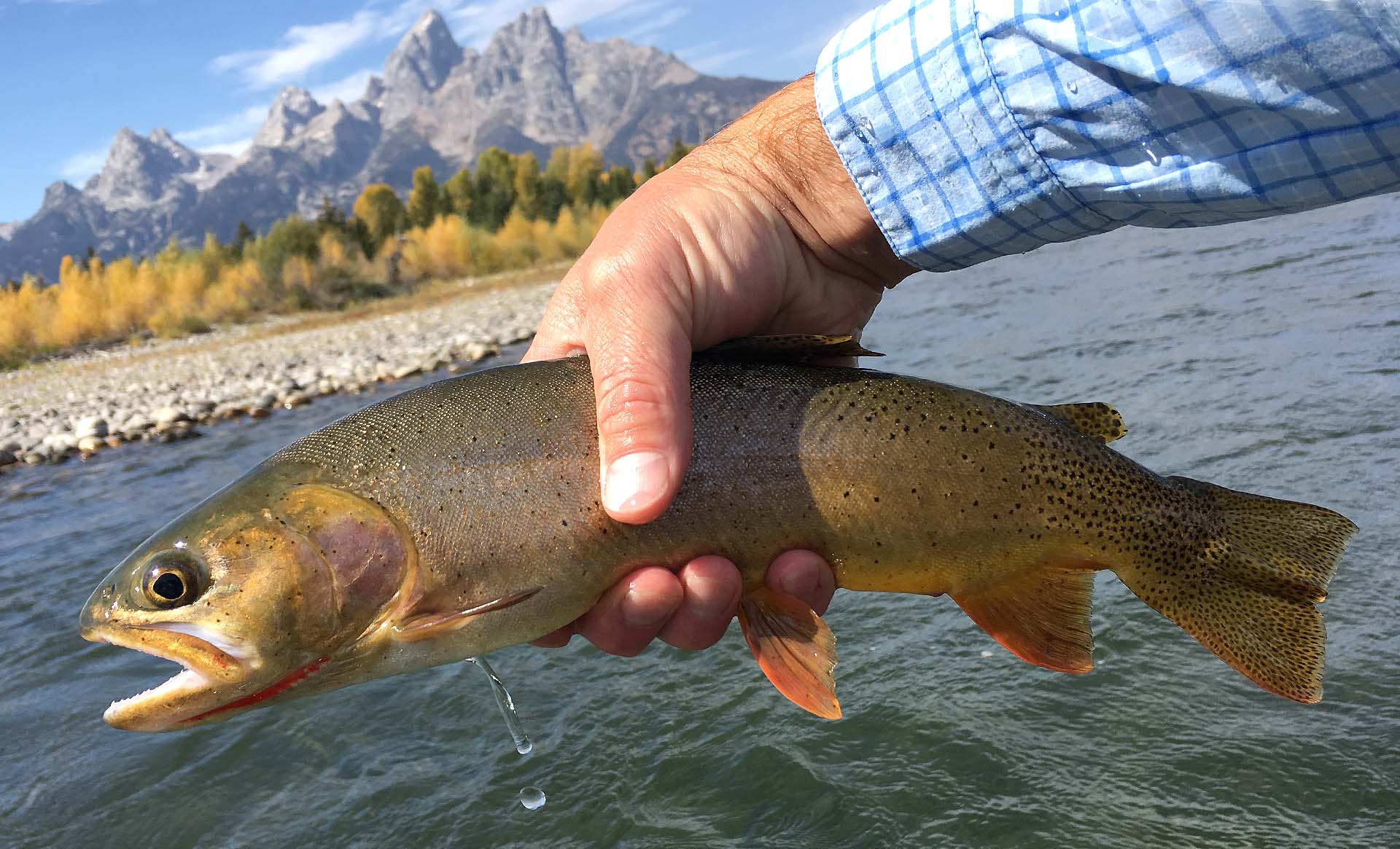
Native Snake River Fine-Spotted Cutthroat Trout
Dappled in hundreds of tiny black dots, and bearing a shockingly bright orange slash below their jawline, the fine-spotted cutthroat trout (Oncorhynchus clarkii) is native to the Snake River. There’s some debate as to whether they’re a separate subspecies or a variation of the Yellowstone Cutthroat (whose spots are noticeably larger). But their unique and spectacular coloration isn’t the only way that these “cuttys” make fly fishing in Jackson Hole special.
Unlike their cousins – rainbow and brown trout – cutthroat trout are not exceedingly selective when it comes to taking a bite of a tasty bug. While they certainly can be found eating highly specific insects at different times of day and season, their propensity to gobble up terrestrial insects means that their attention can often be won with large, be-legged foam patterns, and that hyper-specific hatch matching is frequently not necessary.
Additionally, Snake River fine-spotted cutthroat are among the only river trout that rely heavily on vertebrates in their diet – mainly other fish, and even the occasional unfortunate mammal. Translation for an angler seeking to land a monstrous cutthroat? The river’s heftiest occupants are likely to give chase to a large, well-cast streamer.
These beautiful fish can grow to over twenty inches in length, and weigh up to three pounds. But even those that aren’t immense can put up a significant fight; they’re a great deal of fun to land on a fly rod.
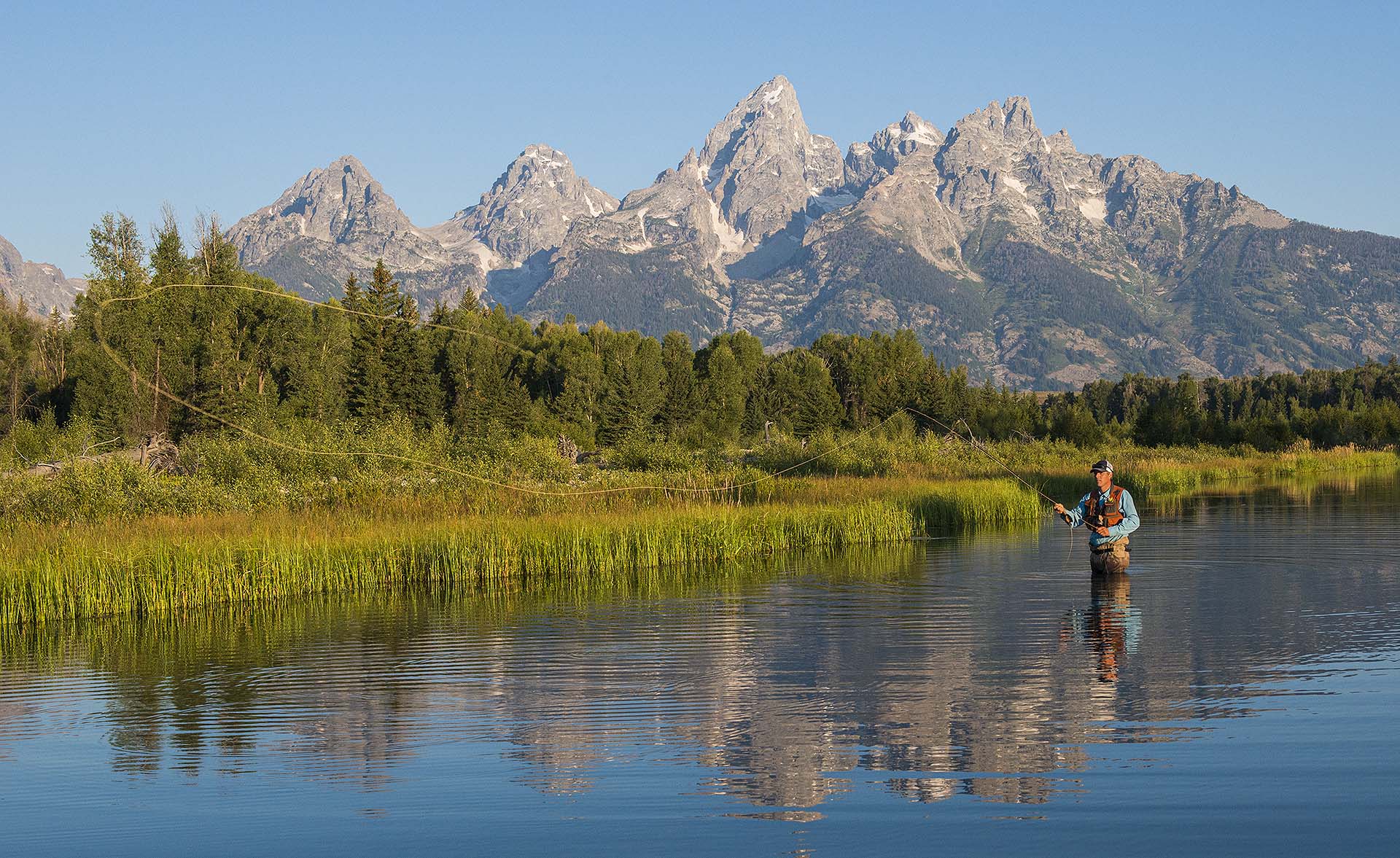
Fly Fishing in Jackson Hole
Whether you’re a novice with dreams of casting away the afternoon below the Tetons, or an expert angler who has had plenty of experience fly fishing in Jackson Hole, the Snake River is full of promise for a great day on the water. Large fish lurk in challenging spots, inviting technical angling to make the perfect presentation. And – steps away – plenty of greedy mid-size trout jostle for bites in wide riffles, pockets, and along banks: ideal, forgiving targets for newer anglers.
There are multiple ways to enjoy the perfect Grand Teton fly fishing trip; the river offers many locations to access great fishing on foot, or enjoy a fishing float from a hard-bottom drift boat. Spend the day with an expert guide on the oars, and you’re essentially guaranteed to land at least a few trout. Regardless of how you access the water, don’t be surprised if you fall in love with fly fishing in Jackson Hole. The fish are unique, the river is pristine, and the views certainly don’t disappoint.
##
